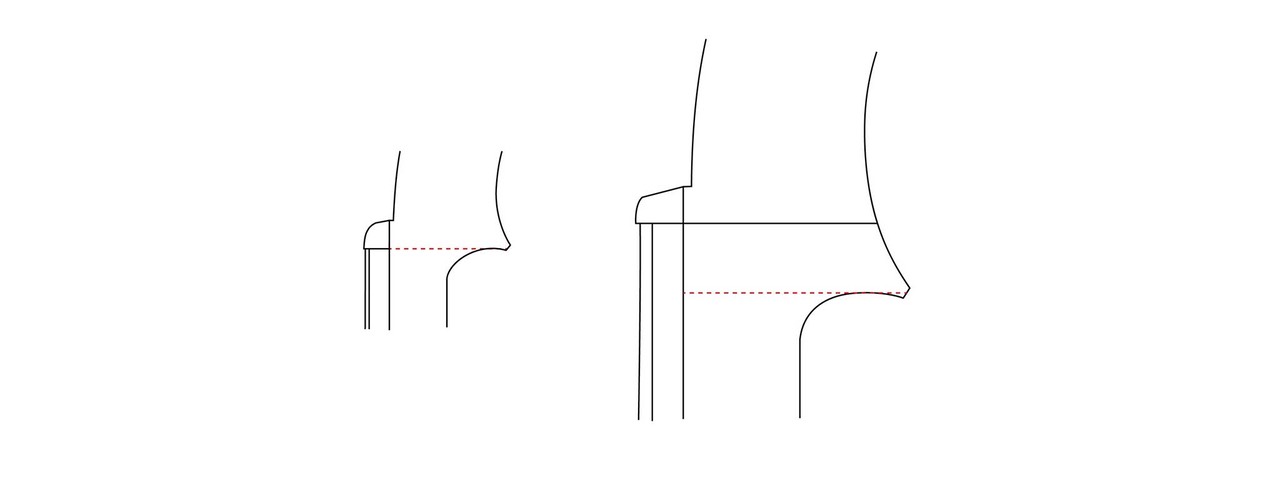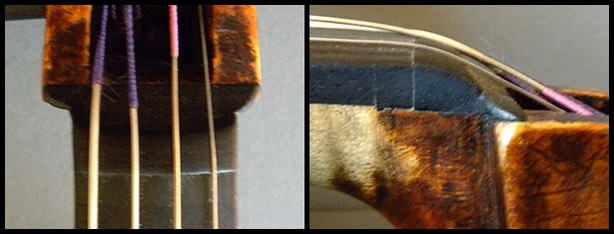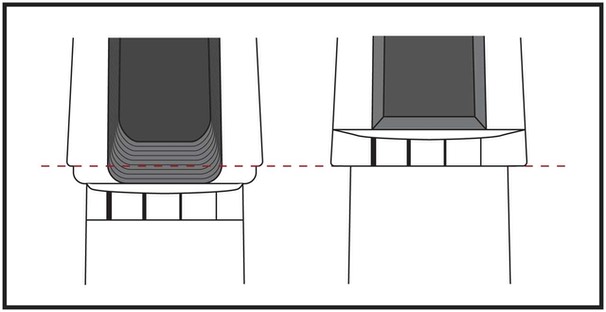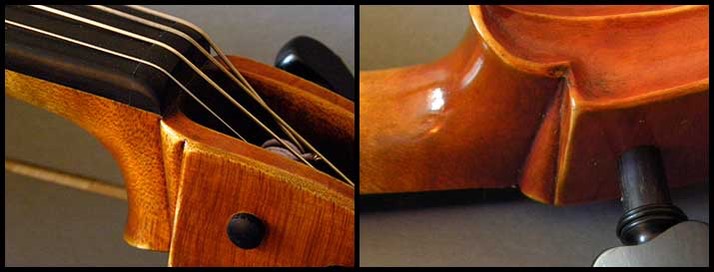It might be said that the viola scroll suffers from a case of split personality. Violins have “violin style” scrolls and cellos have “cello style” scrolls however, any survey of violas is bound to turn up examples with scrolls like violins and like cellos. Most violas fall into the violin scroll camp but, the majority of the makers of the Cremonese school (and their imitators) chose to carve their viola scrolls with cheeks like a cello.

Orientation of the chin of the scroll relative to the nut on a violin scroll and a cello scroll
As a contemporary viola maker, if you choose to make a viola inspired by Cremonese design, you are faced with the choice of making a “cello style” scroll, like the original instrument, or to redesign the scroll as “violin style” one. The choice is not entirely a question of aesthetics. The “cello style” scroll, is visually attractive and historically accurate, and it gives more room in the pegbox for the strings; but it does have some disadvantages on a viola. The “cheeks” on a cello scroll do not encroach on the cellist’s left hand because of the way the cello is held and played. On the viola however, because it is played under the chin, the “cheeks” get in the way of the left hand when playing near the nut.
Of course, the easy thing to do would be to carve all viola scrolls in the violin style, but as Tina Turner once said “I don’t like to do anything nice and easy”. Apparently, I am not alone in this because over the years enterprising violin makers and restorers have come up with a number of ways to use the “cello style” viola scroll, and address the problems presented by the cheeks. In some cases, these solutions can be used in the initial design of a viola or retrofitted to an existing instrument, typically when a neck graft is being done. The two methods illustrated here can be used for both new and old violas.

The first thing I tried was a T-nut; see the picture to the left, showing a viola with a T-nut. To use a T-nut, the neck must be lengthened (or the string length shortened) and the fingerboard is shifted down the neck surface toward the bridge. The gap created between the end of the fingerboard and the pegbox is filled up with an elongated nut shaped like a T-ergo the name. I tried the T-nut on some of my early “cello style” viola scrolls, but ultimately rejected it. I wasn’t crazy about the way it looked-in order to really be effective, it was usually necessary to make it quite long. It wasn’t very attractive and the shape was hard on strings. No violist will be happy if they have to regularly replace expensive strings that are breaking at the nut.

My current solution is based on a neck graft I saw on a Stradivari viola of 1731, known as the “Paganini”. As shown in the drawings above, the pegbox/mortise is made with an extension, creating clearance for the left hand and allowing the fashioning of a standard nut. It is relatively unobtrusive and solves the problems associated with cheeks very effectively. It can be incorporated into the design of a new viola or retrofitted as part of the neck graft process on old violas.
It addresses all the issues in an elegant way, I am surprised I haven’t seen it on more violas.
